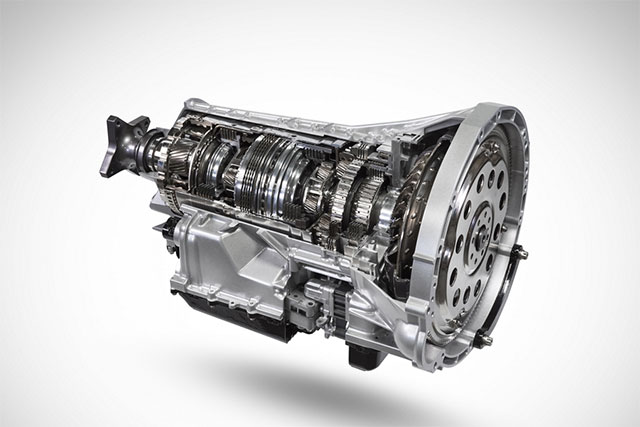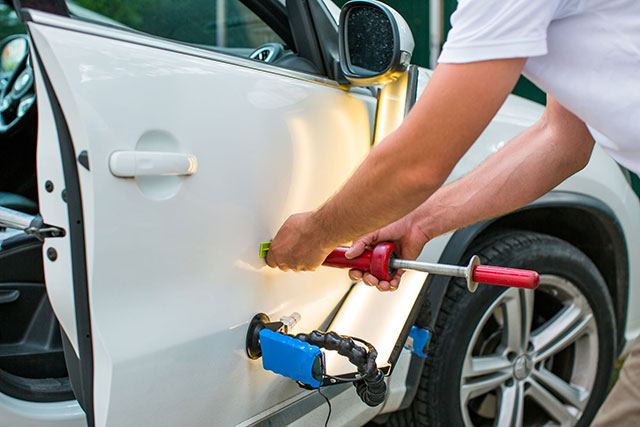The Ford Escape has been a dominant force in the midsize SUV market since its introduction two decades ago. It is an awesome choice for consumers looking for a reliable, fuel-friendly, and fun vehicle. Ford has sold roughly a million Escape models, giving us a good idea of how popular it is among SUV buyers. However, not all Escapes are equal, and not all of them are trouble-free.
Ford Escape transmission issues are quite common (especially in older models) and are a nightmare to deal with. Drivers who frequently travel long distances often experience rough shifting.
Table of Contents
How to Reset Ford Escape Transmission
Today, we will discuss everything you need to know about Ford Escape transmission problems. Which model years of the Escape experience issues most often? How do you identify the Escape transmission snags? How to fix them?

Let’s read on to find more:
Which Model Years Are Most Susceptible to Transmission Problems?
Many Escapes indeed suffered from issues varying in severity depending on the trim level and model year. There may have been a change in design and manufacturing methods or even the vicinity where they are being used.
Eight of twenty Escape models reported transmission issues over the last two decades. Reportedly, the most problematic model years include 2001-2003, 2006, 2008-2011, and 2014.
The seriousness of the problems in 2014 is especially notable, with several reports of Ford Escapes suddenly stopping while driving. Drivers have testified that their vehicle stops entirely and without warning in the middle of the road. The Ford Escape was also reported to show a wrong transmission message suddenly.
Similarly, drivers conveyed several transmission issues related to the 2008 Escape. CarComplaints users reported various problems, from failure to searching for proper gear. When a vehicle is prone to “in motion” errors, we should avoid it at any cost.
Which Escape Model Years Are Safe to Buy?
Even though Escape’s transmission has suffered various issues over the past two decades, there are some exceptions. Below are three model years with the least problems related to Ford Escape transmission.
2004: Most 2004 Escape models do not pose mechanical problems; instead, issues related to paint and bodywork are rampant. Go for this if you are seeking an old Escape. That said, we heard a few reports of transmission malfunctions and electrical issues.
2007: Ford Escape transmission problems decreased significantly in the 2007 model. Nevertheless, some owners still reported the issue. If you consider buying an Escape for this year, ask the seller for the vehicle’s history.
2012: The 2012 Escape has a far more tolerable complaint history than any other model. That means we didn’t find many mechanical complaints about it except the rear window leaks.
Other than these, the models from 2015 to 2021 have reported very few transmission problems. Therefore, they are safe to buy as well, after proper inspection. Below is a complete list of model years that are safe to buy, considering fewer complaints against them that are less severe in nature.
- 2001 Ford Escape
- 2002 Ford Escape
- 2003 Ford Escape
- 2004 Ford Escape
- 2007 Ford Escape
- 2009 Ford Escape
- 2010 Ford Escape
- 2011 Ford Escape
- 2012 Ford Escape
- 2014 Ford Escape
- 2015 Ford Escape
- 2016 Ford Escape
- 2017 Ford Escape
- 2018 Ford Escape
- 2019 Ford Escape
- 2020 Ford Escape
When do the Ford Escape Transmission Problems happen?
Similar to the irregular shifting issue with Ford F150, drivers had to switch off their vehicles and start them repeatedly when a transmission problem occurred. The common issues include shifting difficulty, sudden acceleration or deceleration, and strange sounds.
The Ford Escape transmission problems usually occur between 80,000 and 180,000 miles in the vehicle’s life. A few unlucky owners suffered transmission failures even at an odometer reading of 20,000 miles or fewer. Many of these owners had to pay a hefty amount of $5,000 to fix their vehicles, regardless of how many miles they had traveled.
What are the Signs of Transmission Problems?
No matter how carefully maintained a transmission system is, mechanical problems can arise at any time. Your Ford Escape transmission system may show the following signs whenever it senses a problem:
- Sounds of clunking. There is no reason to assume that a sound never comes before a problem indication. The presence of loud clunks, hums, and buzzes indicates that your transmission may need repair.
- The smell of burning. It is never a good sign when your car emits a burning smell. Different factors may cause the burning smell, including an overheated fluid transmission.
- Slow or no response. The transmission system should be able to change gears smoothly and easily. At the same time, a bad transmission will make the shifts extremely difficult or slow.
- Fluid Leakage. Transmission fluid leaks in Ford Escapes are common. Inspect the underside of your vehicle to determine if there are any pools of reddish-brown fluid. It indicates that a broken gasket or leaky bearing has caused a transmission fluid leak.
- Issues with shifting. The Ford Escape owners have also reported erratic or rough shifting and failure to reverse. Worn joints in the drive shaft sometimes trigger shifting problems. Shifting can also be erratic due to low levels of transmission fluid.
How Do We Fix the Ford Escape Transmission Problems?
Apply some troubleshooting techniques to solve Ford Escape transmission problems. The following methods should help you diagnose and fix the issue in no time.
Replacing Faulty Gasket:
As described earlier, a broken gasket or bearing leak most likely causes the reddish brown fluid underneath the car. A replacement of the faulty gasket or bearing should be able to solve the issue.
Check Fluid Levels:
Observe the way the vehicle shifts. If it shifts erratic or rough, the problem could relate to the drive shaft’s joints or a low transmission fluid level.
Use a dipstick to find out the fluid level. You can find it near the top of the engine compartment. In case the fluid level is low, add more transmission fluid to an appropriate level. Your Escape may need a drive shaft joint replacement if the problem persists.
Buy a Used Transmission:
The fastest and easiest way to fix a faulty Escape transmission is to buy a used transmission of a similar model. By doing so, you will eliminate any problems with your current transmission.
Once the installation of the new transmission is complete, you’ll be able to get back on the road. However, since you do not know the condition of the used transmission, you should be ready for surprises. If your new transmission is already faulty, you may still face similar problems in the future. Ask a professional mechanic to check the used transmission before buying.
Clean or Replace Clogged Transmission Filter:
It is necessary to clean or replace any clogged filters if your Ford Escape transmission is not performing properly. Remove the filters by gently pulling them out of the housing. Be sure to replace them if they are dirty or damaged. Refer to your car owner’s manual for instructions on cleaning and replacing the transmission filter.
Excessively Tight Tension:
The excessive tension in gears and clutch can sometimes lead to sudden transmission failure. When this happens, the transmission shifts very slowly or not at all. In this case, you will have to replace the transmission.
Should You Buy a Used Ford Escape?
The Ford Escape is a reliable and popular utility vehicle, generally. However, a few models have reported more issues than others. With improved manufacturing processes, Ford has eliminated most of the problems of yesteryears. We suggest you go for 2017 or newer models to avoid transmission, engine, suspension, or other issues.
FAQs
1. How Long Does a Ford Escape Transmission Last?
A first-class replacement transmission can last much longer if it has no design errors.
2. How are Ford Escape Transmission Problems Diagnosed?
3. Can You Drive Ford Escape with A Transmission Problem?
4. What is The Process of Replacing a Faulty Ford Escape transmission?
Final Thoughts
The Ford Escape is an affordable, roomy, and comfortable SUV, but the transmission issues have adversely affected its popularity and sales.
We have listed everything you should know about the Ford Escape transmission issues, including the ways to diagnose and fix them. The Ford Escape is still the right choice if you are not bothered by the transmission problems and want a utility vehicle with attractive styling, large cargo space, and high fuel efficiency.
Latest Posts:













